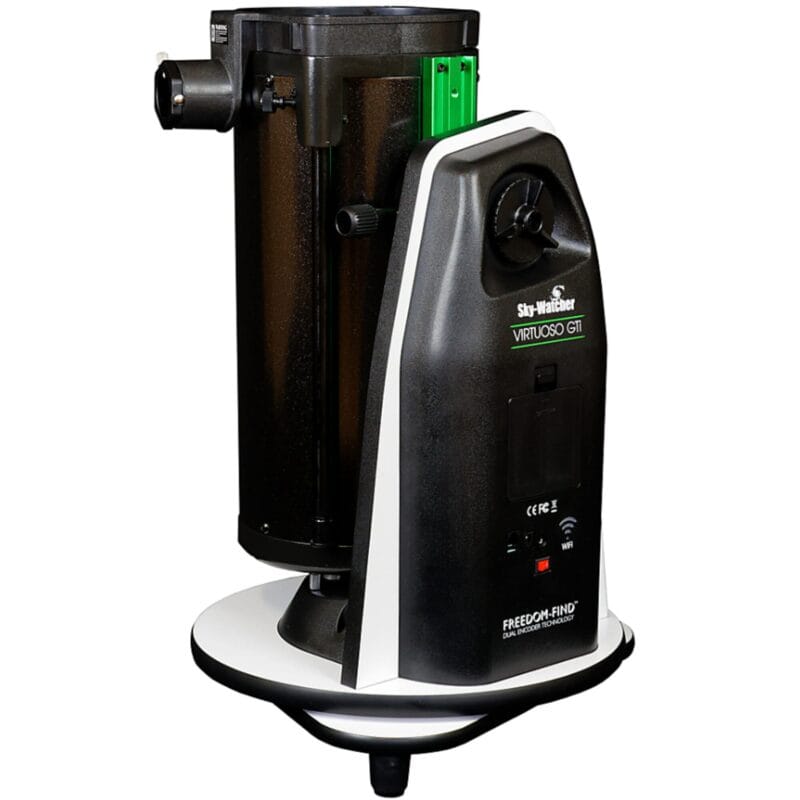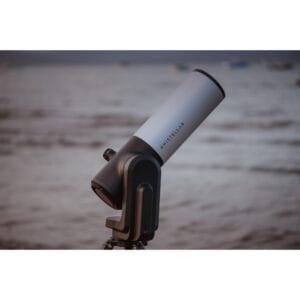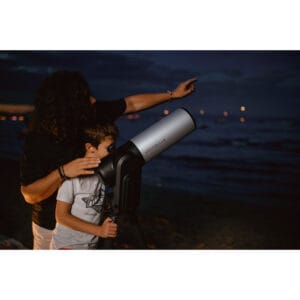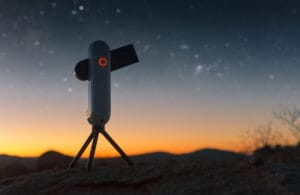A telescope is often the first instrument people use to explore the night sky. But what exactly is a telescope, what can you see with it, and how does it differ from a professional telescope? In this blog, we’ll explain it to you so you can take a good first step towards stargazing.
What Exactly is a Telescope?
A telescope is essentially a collective term for an optical instrument used to observe objects in the sky. The word is often used interchangeably with “telescope”, but there is a subtle difference. In everyday language, people usually mean a telescope for visual observations when they say “stargazing telescope”, primarily focused on the moon, planets, and sometimes bright deep-sky objects like star clusters.
Is a Stargazing Telescope the Same as a Professional Telescope?
Technically, every stargazing telescope is a telescope, but not every telescope is necessarily suitable for stargazing. Telescope is a broader term also used in navigation, ornithology (bird watching), or military applications. A stargazing telescope is typically designed specifically for astronomical use.
There are two main types:
- Refracting telescope (refractor): uses lenses to focus light.
- Reflecting telescope (reflector): uses mirrors to form the image.
Beginner telescopes are often refractors, due to their simplicity and robustness.
What Can You See with a Telescope?
With a good telescope, you can see surprisingly much:
- ✓ The craters on the Moon in detail
- ✓ The rings of Saturn
- ✓ Jupiter’s moons and maybe even the great red spot
- ✓ The phases of Venus
- ✓ The reddish glow of Mars
Sometimes you can also see star clusters and bright nebulae, depending on your location and light pollution.
What’s the Difference from Binoculars?
Many people confuse a telescope with binoculars. While both are optical instruments, the difference is significant:
- Binoculars are light-efficient and handy for quick overview, using both eyes.
- A telescope is designed for higher magnification, using one eye or via a screen, and provides much more detail for planets.
Binoculars are ideal for the Moon and the Milky Way. But for planetary details, you need a telescope.
How Does a Telescope Work?
A telescope works by collecting and focusing light, allowing you to see faint or distant objects better. The magnification is determined by:
Magnification = Telescope focal length / eyepiece focal length
For example: a 900 mm telescope with a 10 mm eyepiece gives 90x magnification. This is fine for the Moon and planets.
Note: more magnification isn’t always better. At 300x magnification, you see less light, less contrast, and often a blurry image. Quality over quantity.
What should You Look for in a Telescope?
Important specifications:
- Aperture (lens or mirror diameter): determines how much light you collect (better for deep-sky)
- Focal length: the longer, the larger the image (better for planets)
- Type of eyepieces: determine magnification and viewing comfort
- Mount: altazimuth (rotates horizontally/vertically) or equatorial (follows celestial bodies) or Dobsonian (tabletop plug & play)
Which Telescope Do We Recommend for Beginners?
For those wanting to start stargazing, these are good models:
- Celestron StarSense Explorer LT 114AZ: works with smartphone, easy alignment
- Sky Watcher 150/1200 DOB: Incredible results, set up within 5 minutes
You can find these models in our beginner’s guide.
How much Does a Good Telescope Cost?
Around €100-€300 you can find reliable entry-level models. Beware of offers on Bol.com or Amazon advertising “800x magnification!” as this is often misleading. Better invest in a solid optical system than in empty marketing claims.
Got Questions? Ask AstroBob
Not sure which telescope suits you? In the bottom right of our site, you’ll find AstroBob: our smart virtual telescope expert. Ask your question and get immediate advice, tailored to your needs and budget.
Or check out our complete telescope guide for beginners and start your adventure under the stars well-prepared.





